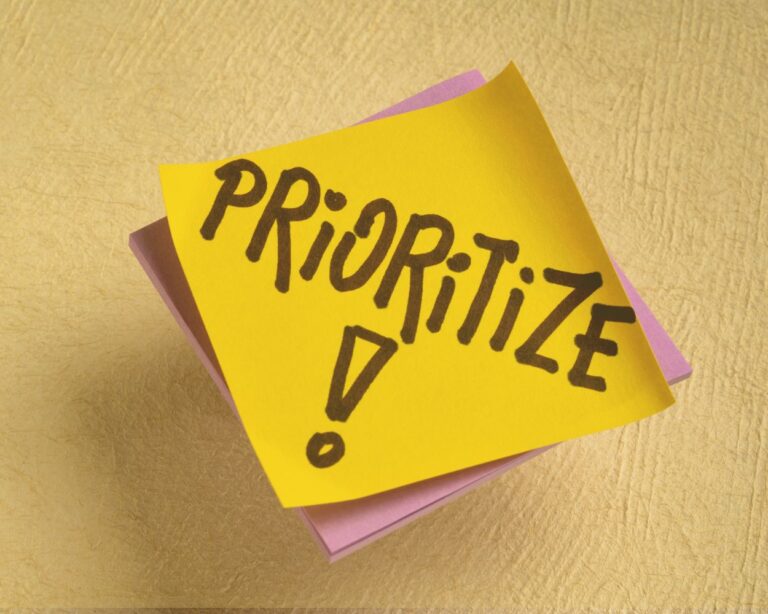
Prioritizing the backlog—the marketer’s ever-growing list of campaigns, content ideas, and growth strategies—is both a trove of opportunity and a bucket of hazards. Tight prioritization leads to shared understanding and alignment. Loose backlog prioritization can quickly overwhelm teams with unclear and conflicting direction. Many teams fall into common traps that can derail their efforts to tame an ever-growing list of ideas. Here are five anti-patterns to avoid when prioritizing your marketing backlog, along with smarter strategies to keep you on the path to success.
Anti-Pattern 1: The Story-of-the-Day Approach
Marketers are known for generating ideas. Yet, jumping on every new trend or request that comes your way can scatter your efforts, leading to poor execution and burnout. This reactive approach means that strategic initiatives often get bumped for the sake of quick wins or because a high-level stakeholder said, “This needs to happen now!”
Instead of being swayed by every new marketing request, follow a shared and agreed-upon approach to prioritizing your backlog – then stick with it! This might involve scoring projects based on potential impact, required effort, and alignment with your business goals. By having a clear prioritization matrix, you can defend your focus against the whims of the moment and ensure that your team’s work has the highest possible impact.
Anti-Pattern 2: Placing Perfection ahead of Good Enough
Seeking the perfect campaign or content piece can result in missed opportunities and a stagnant backlog. Marketers who wait for every detail to be flawless before launching a campaign often end up lagging behind more agile competitors. The goal is to increase flow and embrace a test-and-learn approach as much as possible.
Embrace the ‘Minimum Viable Campaign’ (MVC) approach. By launching with the core essentials and then iterating based on real-world feedback, you can learn and adapt much faster. This doesn’t mean sacrificing quality; it means defining what ‘good enough to go’ looks like and not letting perfect be the enemy of the good.
Anti-Pattern 3: The Equal-Opportunity Mistake
Treating all backlog items as equally important can quickly lead to decision fatigue and a lack of focus. When every task seems critical, the result can be a team spread too thin, with lots of projects started but few finished. Teams that start Agile processes and then let them lapse often face an overwhelming backlog of seemingly-equal initiatives.
To address this, regularly groom your marketing backlog. Apply rigorous backlog prioritization methods such as the MoSCoW method (Must have, Should have, Could have, Won’t have) to differentiate the non-negotiable tasks from the nice-to-haves. This will help you invest your resources in what truly moves the needle for your marketing objectives.
Anti-Pattern 4: The Data-Avoidance Dance
Ignoring marketing data or not hearing all voices when prioritizing means you’re essentially flying blind. Basing decisions on gut feeling or subjective preference can be risky and unproductive, as you may invest in areas that don’t offer the best return on investment.
Let data and different points of view be your guide. Look at analytics to understand what’s working and what’s not. Hear from a variety of people. Prioritize tasks that have a proven track record or test campaigns in a controlled way to gather data before fully committing. The numbers can help you make a case for why certain items should be at the top of your backlog, and listening to all voices gives you a broad perspective from which to make decisions.
Anti-Pattern 5: The ‘Set-It-and-Forget-It’ Syndrome
Once a prioritization is set, sticking to it come hell or high water, regardless of changing circumstances, can lead to missed opportunities or continued investment in underperforming initiatives. The world constantly changes and your backlog must change with it.
Backlog prioritization should be a dynamic process. Just like with your prioritization process, build in a shared and agreed-upon method for making changes. Regularly review your backlog and be willing to shift priorities based on new information, market changes, or feedback. This agile approach ensures that your marketing efforts remain relevant and effective.
Conclusion
Avoiding these anti-patterns is not just about better prioritization; it’s about adopting a mindset that values strategic focus, adaptability, and data-driven decisions. When you do this, your backlog becomes a powerful tool to drive your marketing efforts forward with purpose and precision. Your team benefits from:
- Efficiency – When you prioritize effectively, you optimize your team’s time and the company’s resources, focusing on tasks that offer the greatest return.
- Morale – Teams that have a clear direction and understand the value of their work are generally more motivated and engaged.
- Competitiveness – In a fast-paced industry, being able to quickly pivot and respond to market changes can give you a competitive edge.
- Results – Ultimately, effective prioritization leads to better marketing outcomes, whether that’s increased brand awareness, more leads, or higher sales.
Remember, the goal is to work smarter, not harder. By avoiding these anti-patterns, your marketing team can create a more focused, agile, and effective strategy that drives real results. Keep refining your approach and let your backlog be a source of opportunities, not overwhelm

